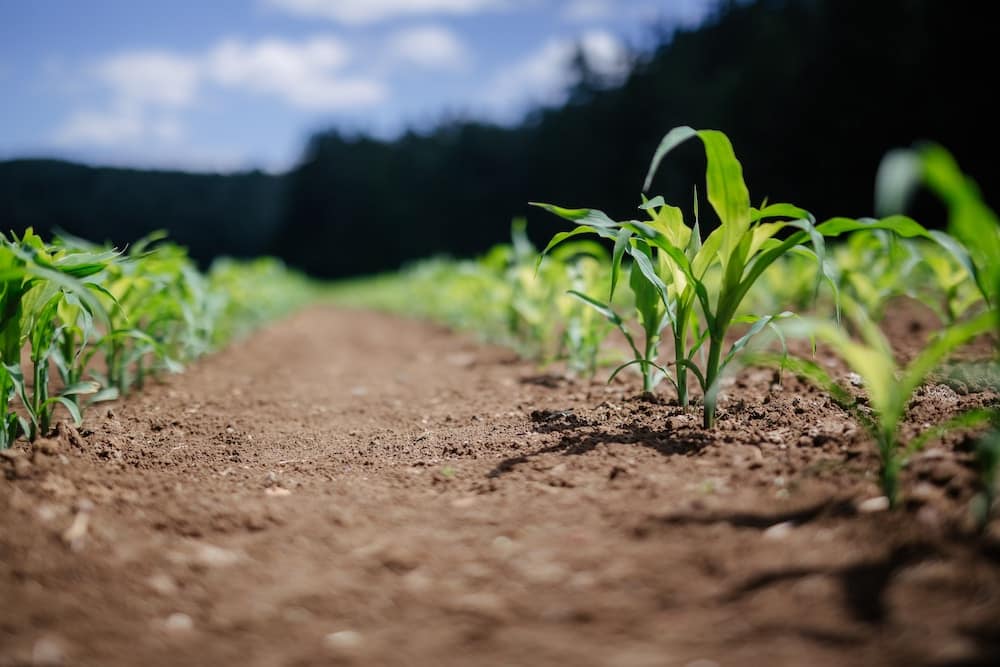Managing Corn Population with SWAT MAPS

SWAT MAPS are all about identifying soil-based management areas in your field. By looking at the soil properties of your fields, we create zones that describe how your soil differs across your field. It is important to realize that how we manage these areas do not remain the same for every crop. How you manage zone 1 with wheat will be different than how you could manage zone 1 with corn. The strategy is different for every field and every crop you are growing.
Corn hybrids are often categorized into determinate (or fixed ears) and indeterminate (or flex ears). The determinate (fixed) has narrow stalks, erect leaves, and smaller roots for better response in high populations. Smaller roots with the determinate variety mean less plants fighting for the same water and nutrients. When you increase the populations, the roots aren’t overwhelmed looking for the resources. The ear size stays somewhat constant or ‘fixed’ no matter what environment it is grown in.
The indeterminate (flex) ears have larger roots, a low response to increased populations and would have more tolerance to drought. If you were to increase populations with the flex hybrid - the larger root size and the increased populations means a higher pull on the soil for the same amount of water and nutrients. So, these hybrids perform better under lower populations. With these hybrids you can decrease the population and the ear size will increase because it is capturing adequate amounts of nutrients, light, and water. It produces longer ears with larger diameter at reduced populations. The ear sizes ‘flex’ with the environment in which it is grown.
How can we use flex and fixed ear hybrids with SWAT MAPS? Return on investment with these hybrids is key. The economic benefit of increasing populations will eventually plateau with fixed varieties. As well with flex, the low end of populations will need to examined or else dollars are being left in the field. So, we end up examining what is the highest end of populations we can push with a hybrid with fixed and the lowest end of populations with the flex. We need to know how corn shows its stresses. And luckily or unluckily, corn shows its stresses easily.
Poorly filled tips, small and lightweight ears are indicators of excessive populations for conditions. It could also be a sign of suboptimal light capture which would indicate reduced photosynthesis and less kernel development. Nutrient deficiencies such as lack of nitrogen or potassium can be a cause of poor tip fill as well. Tillering in these zones could be a sign of too low of population. With SWAT MAPS we are able to identify and then manage those areas better. Zone 1s with SWAT MAPS are the driest areas of the field. If we are seeing poorly filled tips the corn in these dry areas might be too drought stressed to maintain the root systems needed to support a higher population of corn plants. We could then decrease the populations in these areas with fixed ear hybrids or move to a flex ear hybrid in these scenarios. With either management decision there is less competition for nutrients and moisture which is indicated by the SWAT MAP. It is about making the right hybrid decision for your soil. Fortunately, there are many great options in the marketplace as each corn seed company has extensive information packages on their hybrids.
Harvest timing is another management focus that is affected by cob fill. Even maturity across the field can make harvest decisions easier where drier areas of the field are not being sacrificed because the wetter areas of the field are not ready for harvest yet. If we can get drier areas of the field to fill ears at a more normal rate and drydown with the rest of the field, we can manage harvest timing better as well.

Using this Manitoba field as an example, we have red zone 1s which are the driest areas of the field. These dry zones have a lower yield potential and lower response to fertilizer. The recommendation here could be to decrease corn populations with the idea that the corn roots would be able to supply adequate water and nutrients at these lower populations and successfully fill the cobs.
A zone 5 in the yellow would likely have sufficient water holding capability and better soil attributes. Average populations in these areas could be the recommendation. These zone 5s could have an average yield potential and medium response to fertilizer.
SWAT MAPS zone 10 in the dark green would be either the wettest or potentially most saline zones. Corn does not perform well under salinity. The suggestion here could be to decrease populations in these zones if salinity was the limiting factor. Or if these areas were well drained, populations could be increased even further to make use of the water and nutrients held in these zones. In high performing zone 10s the yield potential could be quite high and need more fertilizer to push these zones to maximum yield potential.
Successful precision agronomy depends on creating the correct zone map that can group all the areas together that have a similar response, and then applying the correct agronomic rates to each zone. SWAT MAPS allows us to understand why crop populations or fertilizer responses would change in different zones. The next step is to talk to your Croptimistic Precision Agronomist or your local SWAT MAPS partner to create the optimal populations for corn and other crops based on their agronomic knowledge of your field conditions.
Amber Knaggs
Precision Agronomist
amber@swatmaps.com









